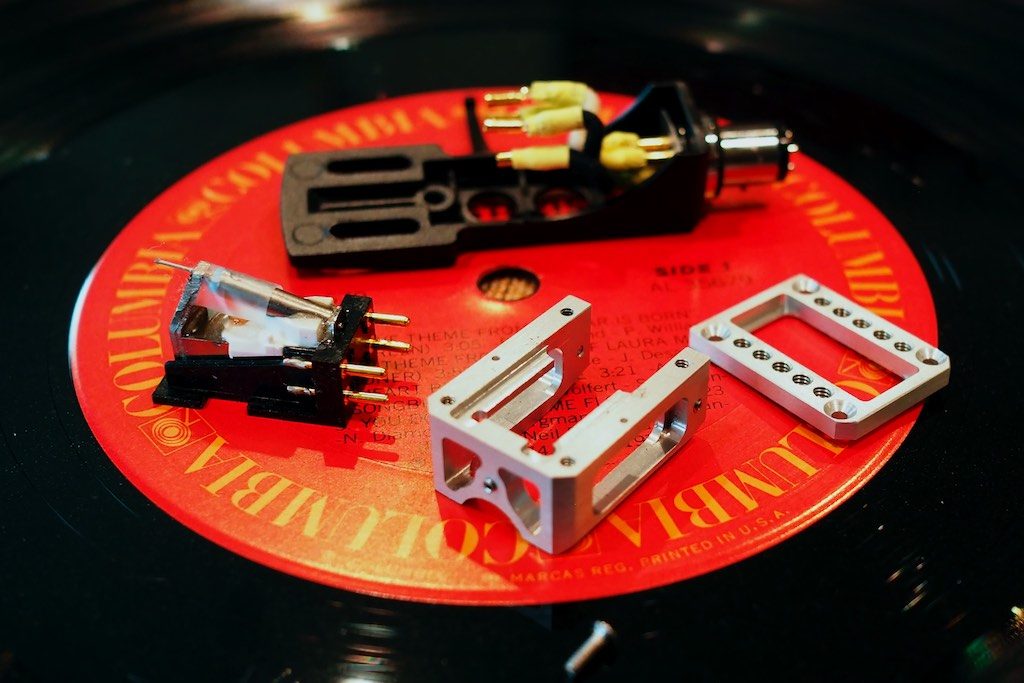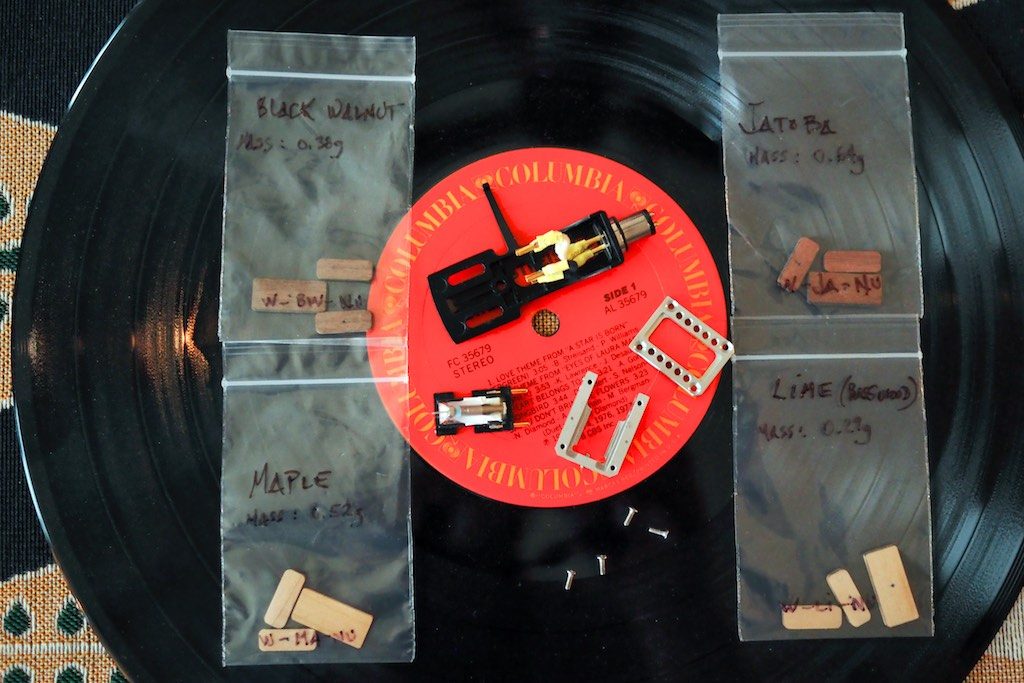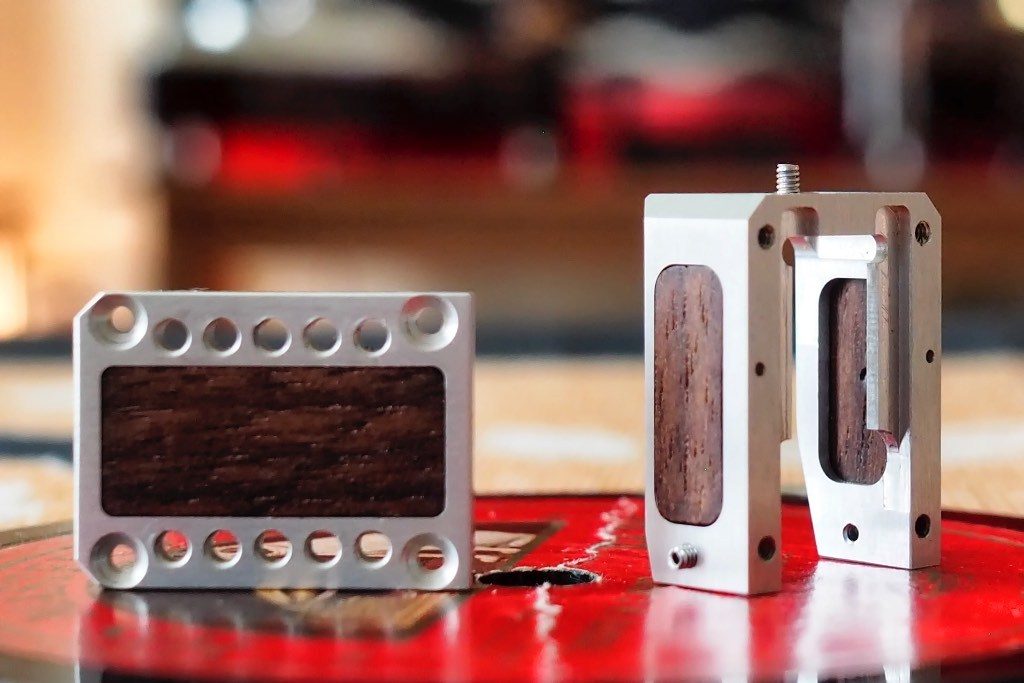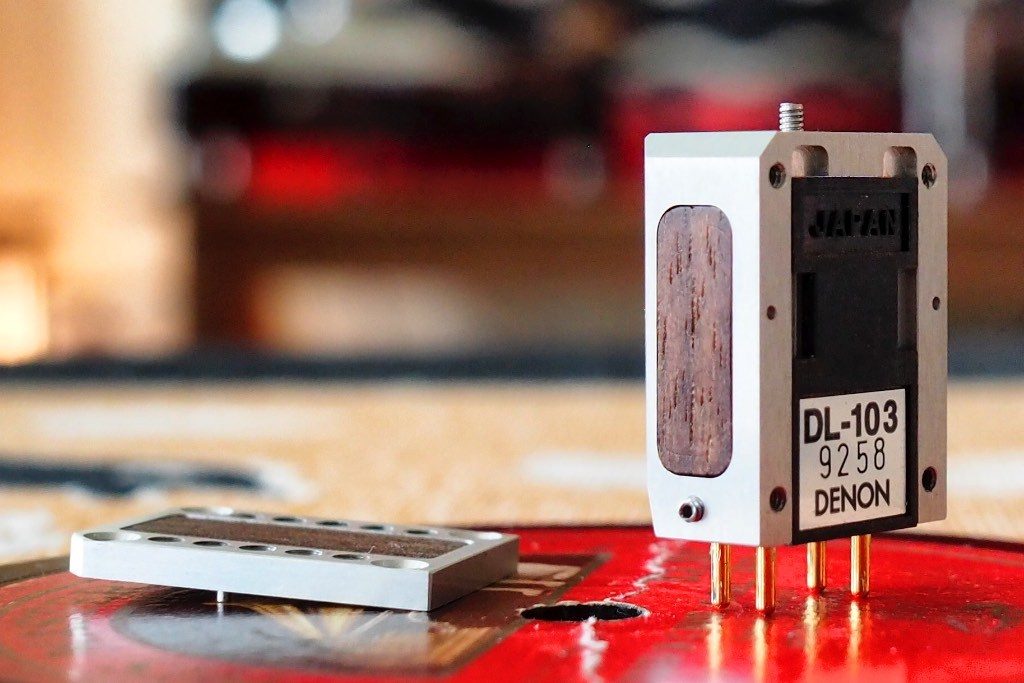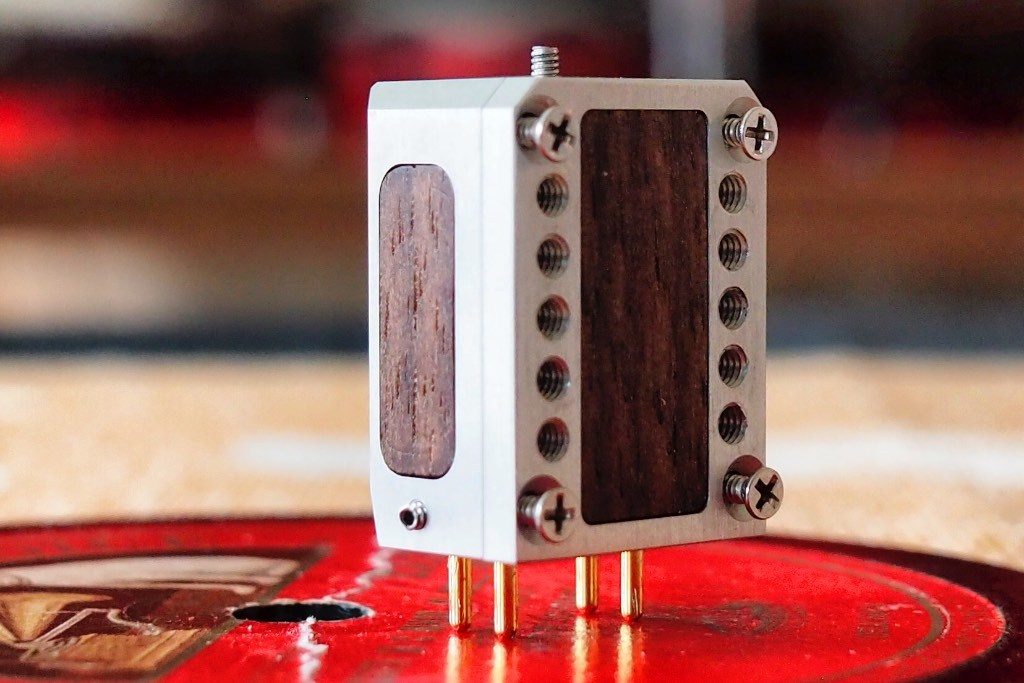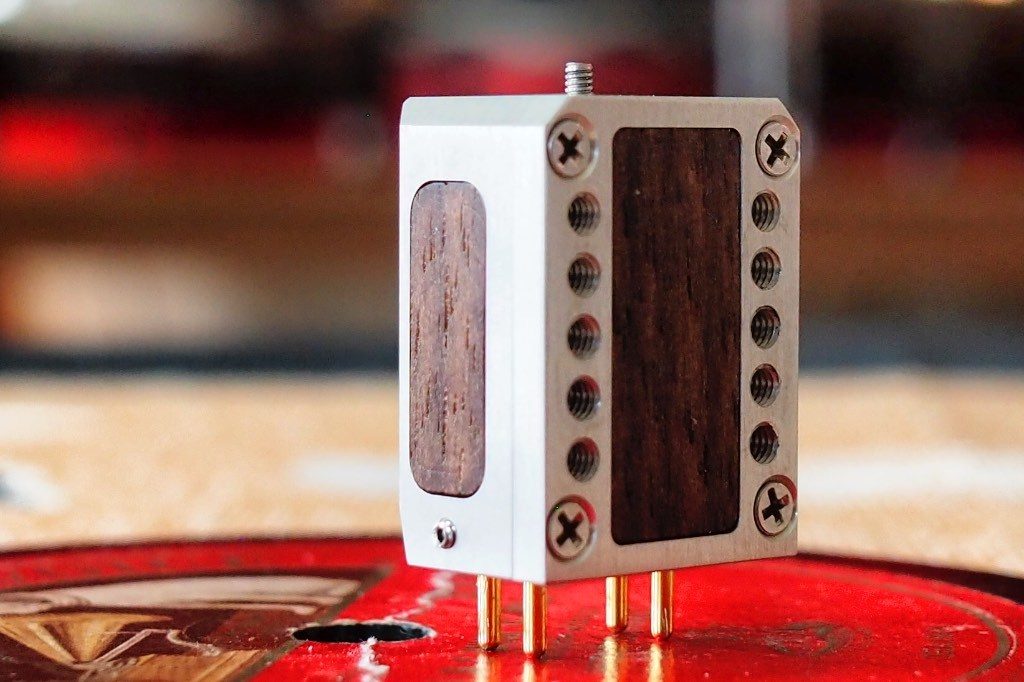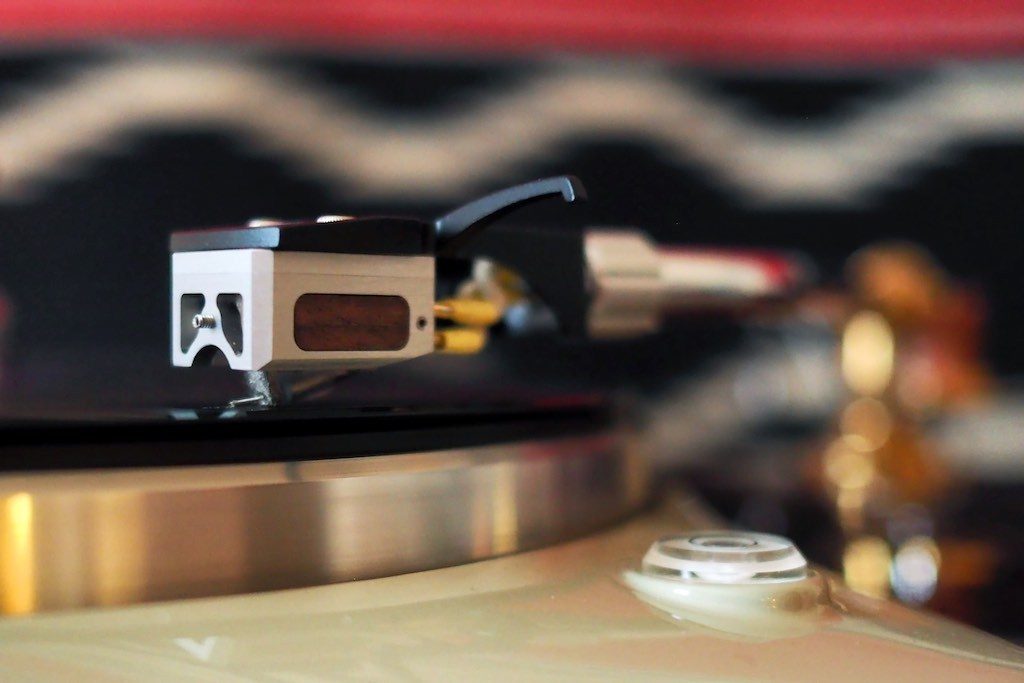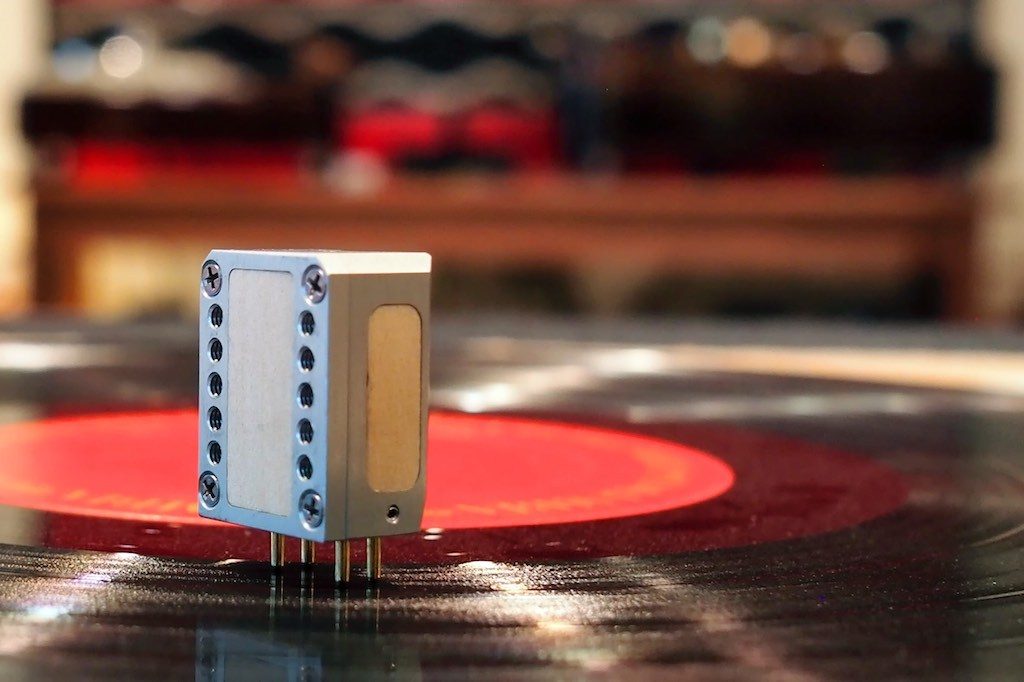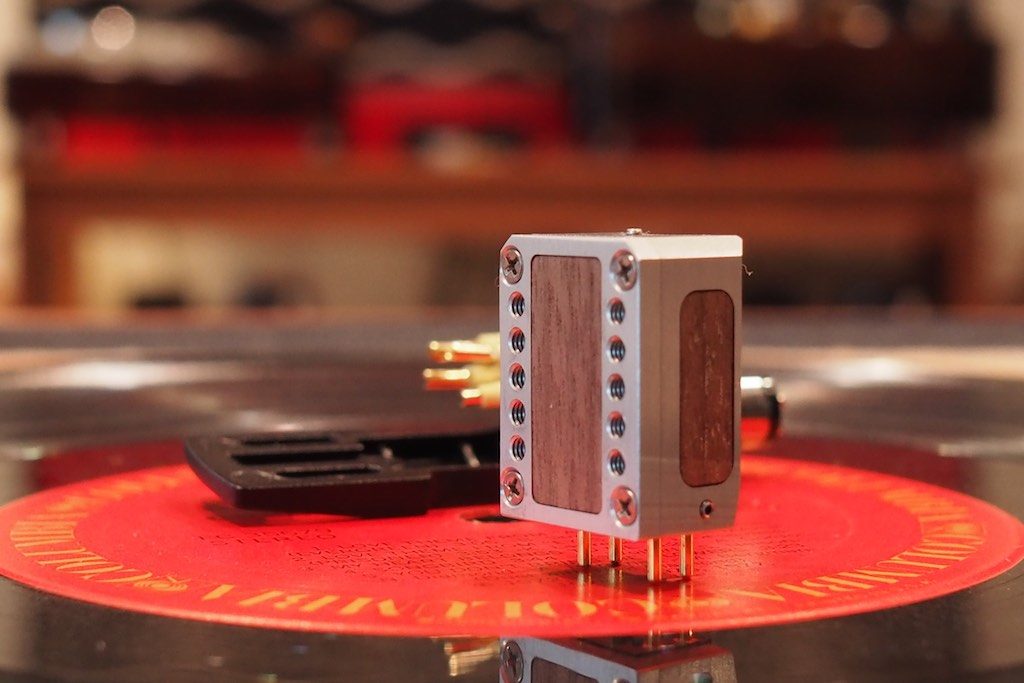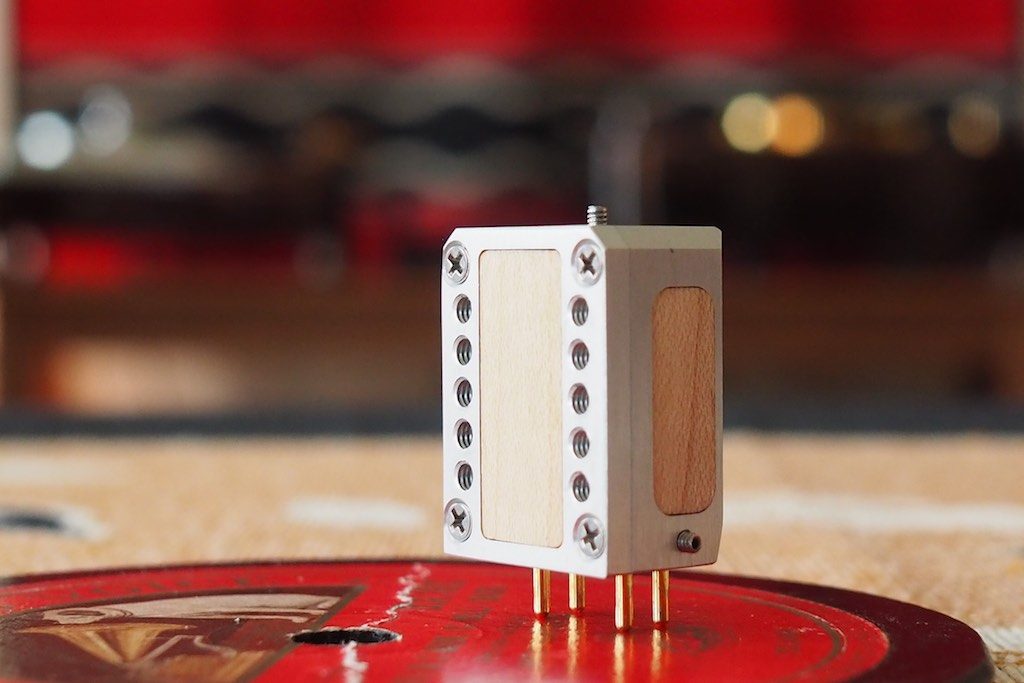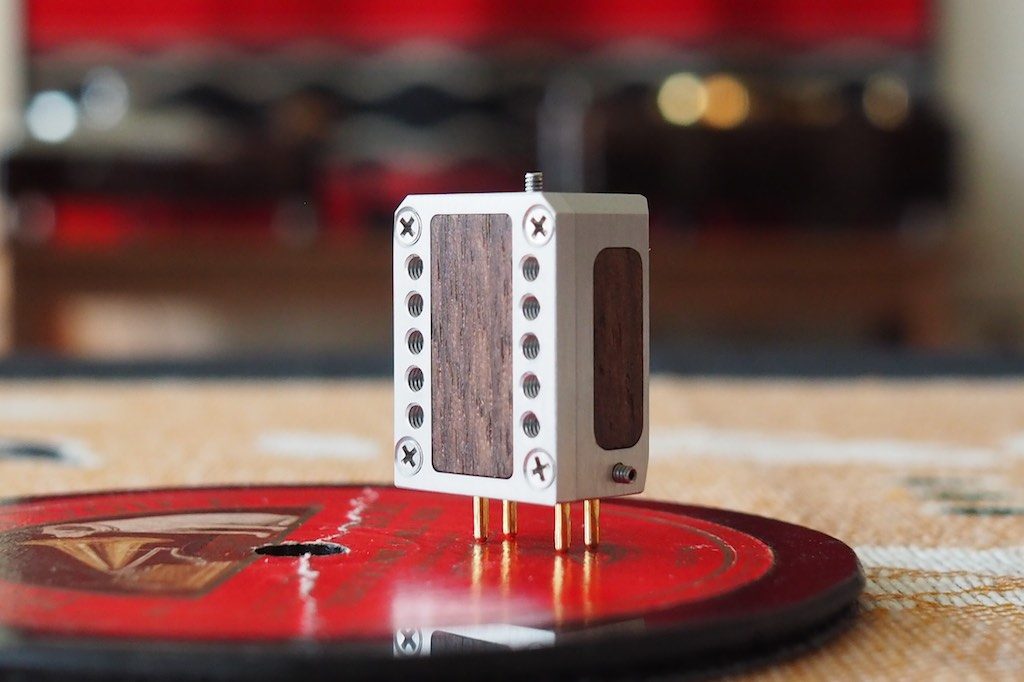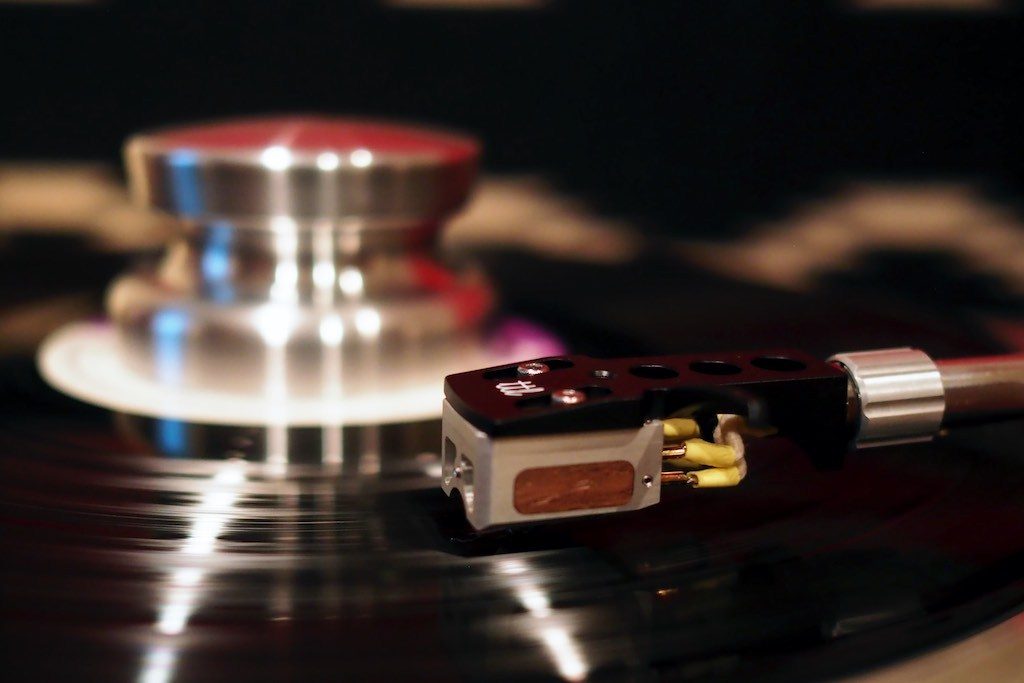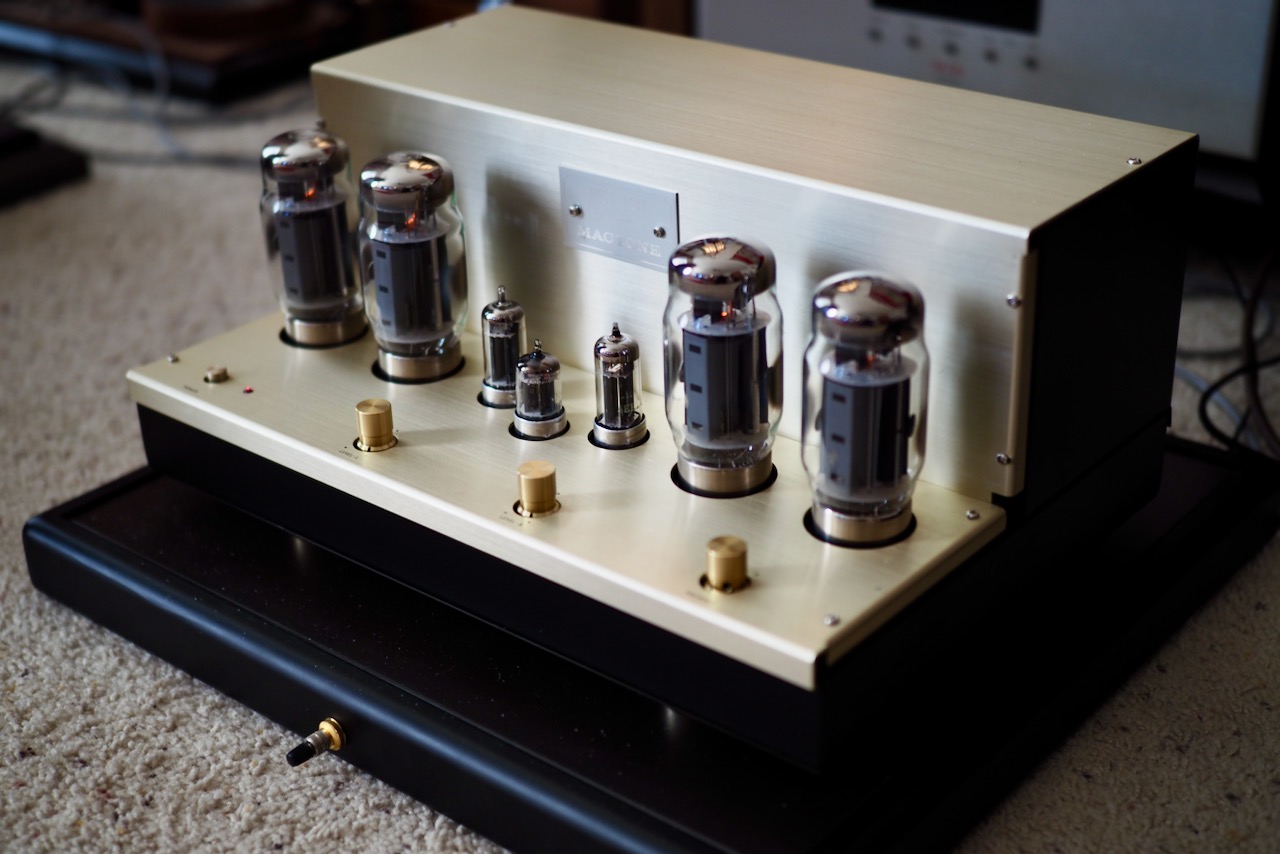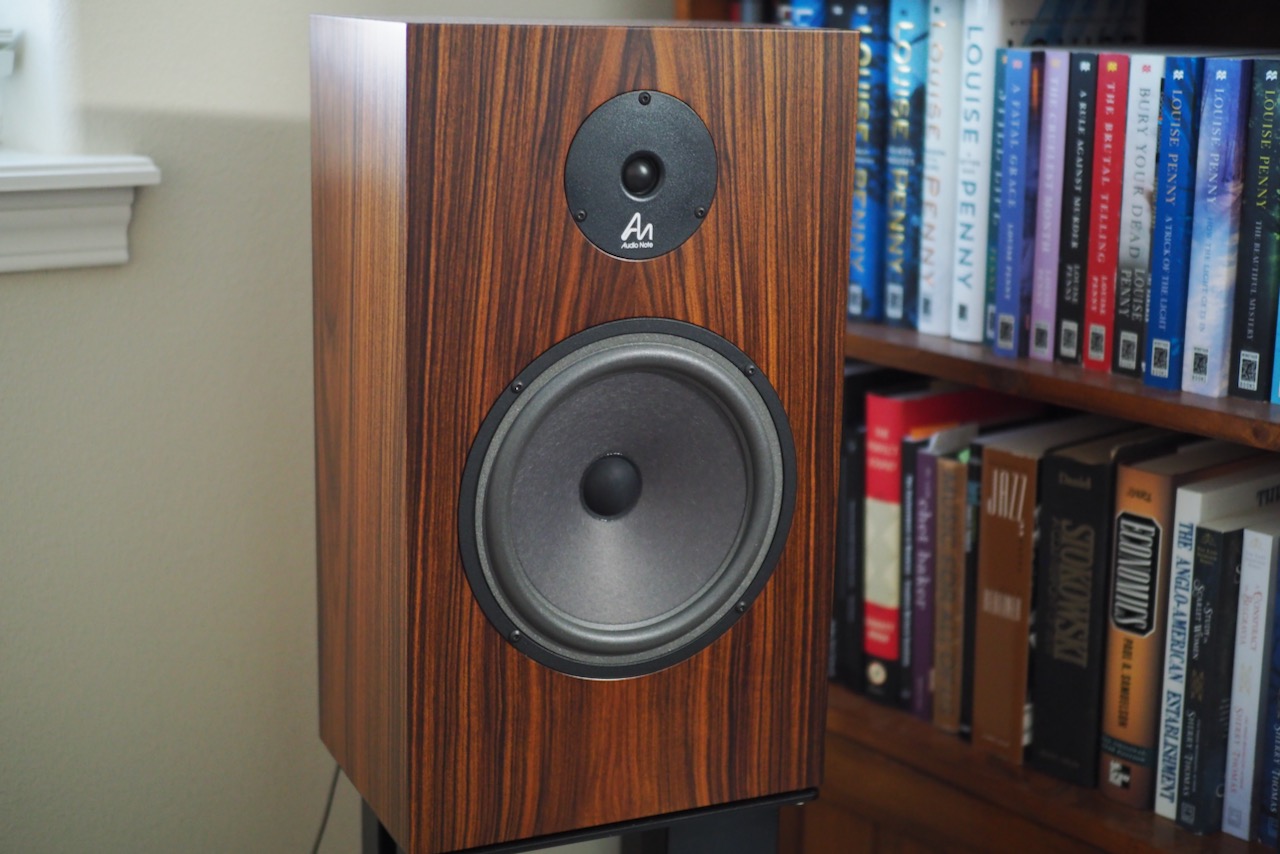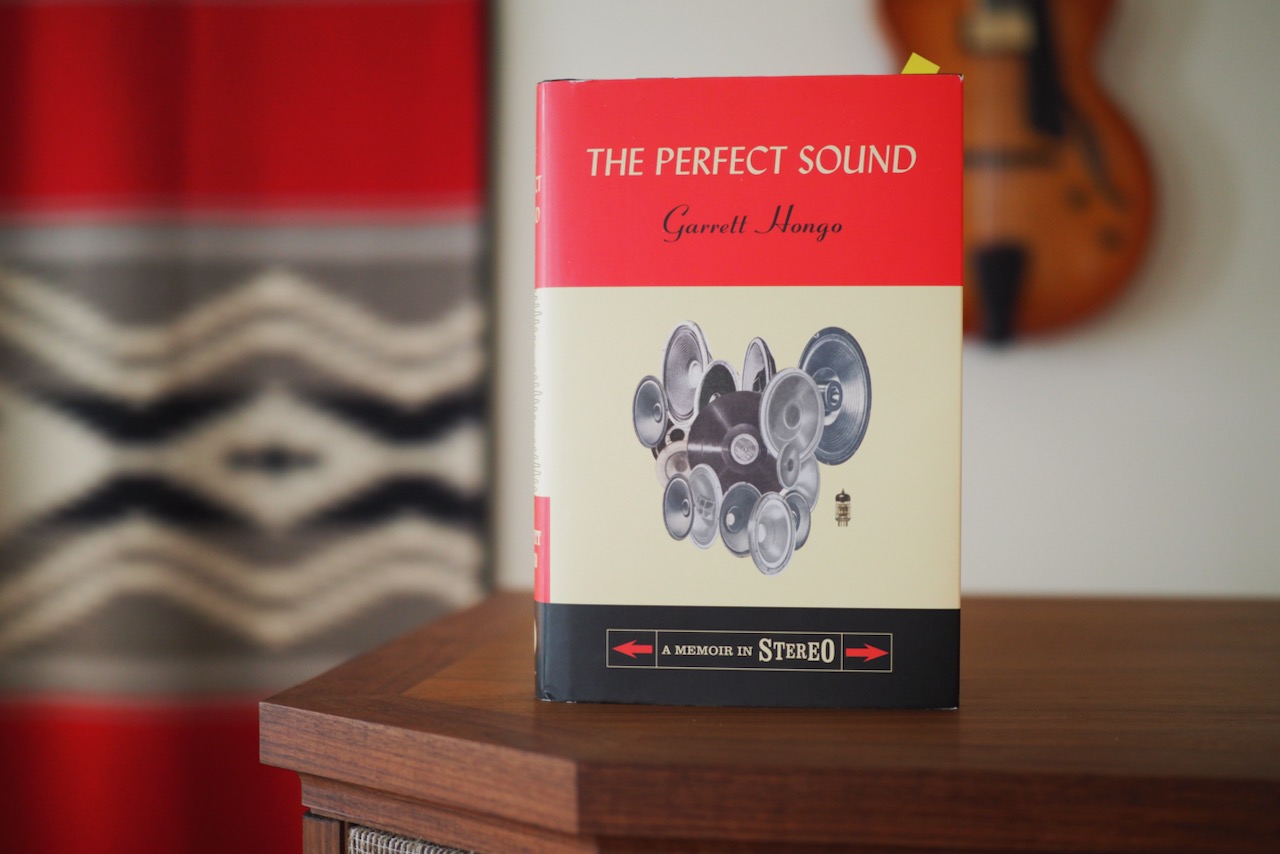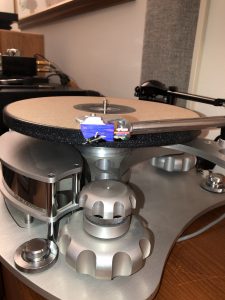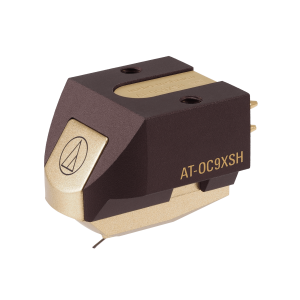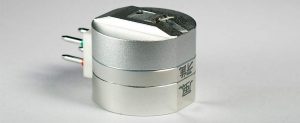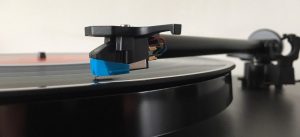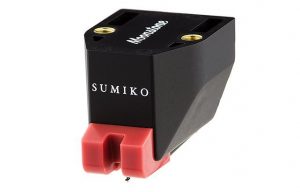Experimenting with Sets of Tonewood Tuning Inserts
Next, I wanted to listen to the Audio MusiKraft Denon DL-103 with a set of the tonewood tuning inserts installed, and the tensioning screws disengaged.
In order to install or remove the tonewood tuning inserts the Audio MusiKraft Denon DL-103 needs to be removed from the headshell and dismantled.
In the video below Guy demonstrates removing the Denon DL-103 from the Audio MusiKraft cartridge shell, and I recommend you watch the video before trying to dismantle the shell from the Denon DL-103.
While disassembling the Audio MusiKraft cartridge shell to install or remove tonewood tuning inserts is more daunting a task than tightening the tensioning screws, after a couple times going through the process it is non-intimidating and becomes relatively quick and easy.
I disassembled the Audio MusiKraft Denon DL-103 according to Guy's instructional video, and it gave me a good opportunity to look closely at the shell's design and how it works.
A top view of the disassembled shell reveals a built-in shelf in the shell that the Denon DL-103's inner chassis rests on.
The shell's top plate has placement pins that align with holes in the cartridge shell, and when screwed into place it rigidly & accurately locks the Denon DL-103 in place.
Once the Audio MusiKraft Denon DL-103 has been disassembled, sets of wood tuning inserts can be installed or removed as described in Guy's instructional video below.
One by one, I installed each set of the black walnut, lime, jatoba, and maple, tonewood tuning inserts into the top & sides of the cartridge shell's receptacles, and listened to the results.
Below are photographs of the black walnut tonewood tuning inserts as I installed them into the cartridge shell to prepare for a listening session.
Guy sent me four sets of tonewood tuning inserts that he thought would cover a wide spectrum of voicing possibilities: Lime (mass = 0.29g), Black Walnut (mass = 0.38g), Maple (mass = 0.52g), and Jatoba (mass = 0.64g), which are shown in order in the photos below.
As noted, each of the different set of tonewood tuning inserts has a different mass, so you have to be sure to reset the tracking force to accommodate their mass when changing tonewood tuning inserts.
I decided I'd give the Black Walnut a try first. I was able to insert the top and side pieces of Black Walnut into the cartridge shell receptacles quite easily with light finger pressure.
I'm not sure what I was expecting to hear with the Black Walnut wood tuning inserts installed, but I wasn't really prepared for the large difference in musicality & sonics I heard on The Alternate Blues.
Certainly, the magnitude of change of adding the tonewood tuning inserts into their cartridge shell receptacles was nearly as big as the huge change of adding the Audio MusiKraft cartridge shell to the Denon DL-103 to replace its stock plastic cartridge shell.
The first thing I noticed was how much more "in the room" presence the instruments had, the improved bass note definition, how the overall resolution had improved, and how the music sounded more "live".
I pretty much liked everything I was hearing with the Black Walnut tonewood inserts, with one exception, the muted trumpet sounded way too brash and forward for my tastes.
The muted trumpet tonality took me by surprise, as I thought adding in the Black Walnut tonewood tuning inserts would mellow out the muted trumpet a bit on The Alternate Blues, so the added forwardness was just the opposite of what I was expecting, and because of that I preferred the overall sonics & musicality of the Audio MusiKraft Denon DL-103 without the Black Walnut tuning inserts installed, as it was more mellow sounding nude.
I was thinking that if I could keep all the good qualities that the Black Walnut tonewood tuning inserts added to the presentation, without the added forwardness of the muted trumpet, it would be an ideal match to my system & personal taste.
I then moved on to try the Lime tonewood inserts, the Jatoba tonewood inserts, and finally the Maple tonewood inserts, to see which one would be the best match for my system balance and personal taste.
The mass relationship of the tonewood tuning inserts is Lime (mass = 0.29g), Black Walnut (mass = 0.38g), Maple (mass = 0.52g), and Jatoba (mass = 0.64g).
I was expecting the wood tuning inserts to follow a mass relationship for trends in musicality & sonics, but that wasn't the case, they all sounded completely different with no correlation to mass, so there is more to their tuning effects than just mass considerations.
After listening to a bunch of different records and musical styles, I decided my preference (least to most liked) for the most complimentary match of sonic & musical performance for my system needs and personal tastes were Black Walnut (mass = 0.38g), Lime (mass = 0.29g), Jatoba (mass = 0.64g), and Maple (mass = 0.52g).
There's no such thing as "good" or "bad" tonewoods, rather each of the sets of tonewood inserts have their own unique musical & sonic balance, and which one will be the best tonewood for you will depend on your system balance and personal tastes.
I was intrigued that the Maple tonewood inserts rose to the top of my preferences, as Maple is a classic tonewood for making musical instruments, like the Maple back & sides of my archtop jazz guitar, for example.
When I have an opportunity to explore other tonewood insert sets, those tonewoods that are most frequently used in making musical instruments will be at the top of my list: Maple, Rosewood, Mahogany, Cherry, Spruce, and Cedar.




